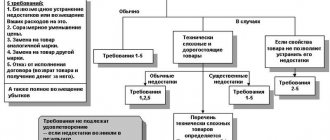Construction plays a key role in urban and infrastructure development, but it also produces emissions that can negatively impact the environment and human health. Emissions during construction include a variety of pollutants and can have long-term impacts. In this article we will look at the issue of emissions during construction, their impact, control methods and ways to reduce negative consequences.
Types of Emissions during the Construction Period
Dust and Particulate Matter: One of the most common emissions from construction is dust and particulate matter. They arise as a result of dismantling, excavation and transportation of materials.
Gas Emissions: The use of construction equipment such as excavators and bulldozers can result in emissions of gases such as nitrogen oxides and carbon compounds. These gases contribute to atmospheric pollution.
Noise Emissions: Construction work is accompanied by noise from machinery, equipment and building materials, which can cause discomfort to others and have health impacts.
Land changes: Land changes themselves during construction can have serious impacts on nature, including cutting down trees, changing water flows, etc.
Environmental and Health Impact
Emissions during construction may have the following negative consequences:
Air Pollution: Dust and gases can degrade air quality in construction areas, which can be dangerous for people with respiratory conditions.
Water Pollution: Construction runoff can contain harmful chemicals that end up in waterways and pollute the water.
Soil Deterioration: Land changes can lead to soil erosion and loss of fertility.
Noise Exposure: Excessive noise from construction activities can cause stress and affect people's nervous systems.
Control and Reduction of Emissions during the Construction Period
To reduce the negative impact of emissions during construction, the following methods are used:
Use of green technologies: Transition to more efficient and cleaner construction technologies and equipment.
Emission Monitoring and Control: Regularly monitor air, water and soil quality to identify problems and respond immediately.
Special permits and standards: Establishing standards and requirements for emissions and noise impact when obtaining building permits.
Effective waste management: Disposal and recycling of construction waste with minimal impact on the environment.
Development of new technologies: Introduction of innovative technologies, such as electric transport and construction with minimal use of natural resources.
Conclusion
Emissions during construction remain a significant problem, but with compliance and the use of modern technologies, their impact on the environment and human health can be significantly reduced. Sustainable construction and environmental stewardship are becoming increasingly important aspects of modern infrastructure and urban development.







